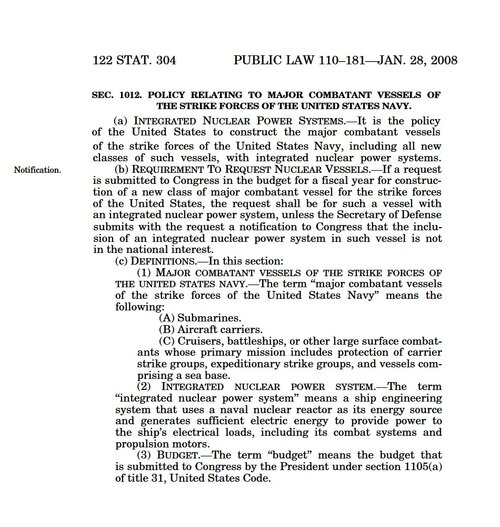Trying to fight the WW2 Pacific carrier battles with nuclear submarines would see a lot of flailing and little of substance accomplished. For all their vital strengths the fatal weakness of nuclear submarines in sea control is their lack of information gathering capability compared to an aircraft carrier. A submarine is dependent on its sonar system to detect anything, and that sonar system has far more limited range and compared to an aircraft carrier stuffed with radar-equipped aircraft that can be further enhanced by sensor pods.
Worse, a submarine that wants to stay hidden is a submarine that can barely receive information. Yes, there are methods to transmit information to a submarine underwater, but these are sharply data-limited. Certainly nothing compared to the wealth of off-board sensors that an aircraft carrier can quietly access the data of.
And WW2 carrier battles hinged on the ability to gather information. They still do, "hit first effectively" is still a core tenet of surface warfare and reconnaissance is vital.
Now, the RN's SSNs being the more important asset than the RN's strike carriers is a more defensible argument and one I don't feel the need to argue against. But it's a separate question.
Mine was a half formed thought on carriers, but the point was that to fight in the pacific of today I see the strike force as subs, not carriers tryng to sink each other.
The truly awesome US carrier force seems to be acting as a “we must use carriers to crack this nut” driver and hence the call for “super duper F14s” to try and defeat the impressively growing chinese air and naval forces in the island chain areas.
To me this is a mistake, the battle will be for control of the sea lanes, as it has always been, China’s (increasing) achillies heel is its dependence uppn import/export just as the UKs was when it was a manufacturing hub. So hit that, which doesnt require penetrating the china sea or even really the island chains (since the ship destinations are further afield). Subs as before are the killer threat, cued as ever by land, air and now space assets. Let the carriers sit back and not have to banzai run at the chinese defences which regardless of how uber the next jet is, seems certain death given the inherant mismatch between the ability to geebrate missile and air forces on land vs afloat.
So I’d see subs as the key, which seems backed by Aukus and the US focus on Virginia and future SSNs. Still need carriers sure, but F35 class is fine, especially if you have something like MQ25 to push them.
NATO was vastly different in nature to SEATO and CENTO, it was formed voluntarily from self interest rather than being organised by outside powers. While it had tensions and issues it wasn't in serious jeopardy of breaking up.
I think you’ve missed a lot of NATOs history and that of western europe tbh.
What kept it from breaking was precisely the common commitment to what was AFCENT, that for the UK is BAOR/2ATAF.
There being no money for carriers is a big misnomer. There was money for the 13 million pound useless Tiger conversion, for the 32 million Ark Royal Phantomisation, for 3 Invincible class carriers and the development and production of 28+ Sea Harriers after discarding to the RAF some 40 Phantoms and 80 Buccaneers.
Clearly there wasn’t the money as we don’t have them. Your costs dont even touch the sides of a CVA force.
The RAF would be a loser with the RN carriers but they also wouldn't need to take on the naval support roles they did when the RN vacated the field.
Handful of sqns, makes no difference.
As for Army mass, in the Cold War the British Army was about 165,000 strong, if going to 160,000 makes NATO collapse then they might as well give up and buy a white flag.
Again, the RN couldn’t recruit/retain its actual numbers let alone 5k more. The idea 5k less Army buys and mans you carriers is just weird frankly.
BAOR won't be disbanded for carriers, it will be reduced in numbers by 5-10% and the entire Army by 2%.
Which wont get you carriers. The Army was getting salami sliced like that anyway and what kept stopping more was concerns over NATO commitment. If they could keep slicing BAOR they would have and just taken the saving.
As for carriers vs Army mass, obviously carriers are more important as they take longer to build and make operational, whereas an increase in BAOR by 5-10% could be done within a couple of years with a redeployment of troops from Britain and elsewhere and a bump in recruiting (if possible).
That flies in the face of the reality of what we’ve actually used. Armd mass 91, armd/mech mass for rotation and deployment 90s balkans, armd mass for 2003 and deployment rotations through to 2015. At no point would CVA carriers have added much value vs what we had to do which was troops on the ground.
Plus the idea you can build a combined arms battlewinning armoured force quickly is just silly, the Army struggles to retain it as it is. Complex fighting is something all services do, and Ajax rivals the carriers in time and cost to generate…
Ukraine also shows how hard it is to generate winning land forces quickly by expansion.
This meme some people had that “
if we just shaft another part of defence we can have these glorious shiney toys”, its puerile. The carriers were built on EoS and that as realised wasn’t worth the cost hence why all the forces (RAF and Army) assigned to it disappeared. If it hadn’t been for Sandy’s having bigger issues to face they’d have gone a decade earlier.


